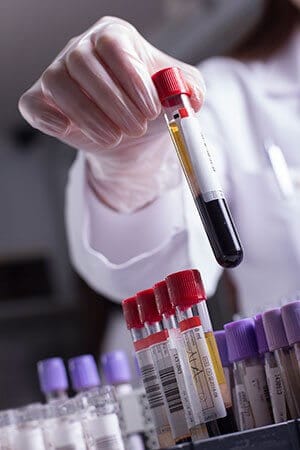University of Notre Dame applied mathematician Mark Alber and environmental biotechnologist Robert Nerenberg have developed a new computational model that effectively simulates the mechanical behavior of biofilms. Their model may lead to new strategies for studying a range of issues from blood clots to waste treatment systems.
“Blood clotting is a leading cause of death in the United States at this point,” said Alber, who is The Vincent J. Duncan Family Professor of Applied Mathematics in the College of Science and an adjunct professor of medicine at the Indiana University School of Medicine, South Bend. “We can now use a very fast and biologically relevant computational model to study deforming structures of the clots growing in blood flow.”
The new model may be adapted to study clot formation in blood vessels, which can pose the risk of detaching and migrating to the lungs, a fatal event. Clots in healthy people usually stop growing and dissolve on their own. The clots, which result from genetic deficiencies, injury, inflammation or such diseases as cancer and diabetes, can grow uncontrollably or develop irregular shapes, threatening to detach under the pressure of blood flowing through the vessels.
Biofilms are found on almost any moist surface including veins, water pipes, ship hulls, contact lenses and hospital equipment. Biofilms are aggregates of bacterial cells embedded in self-produced extracellular polymer substances (EPS). Some biofilms are beneficial, treating wastewater and allowing the biodegradation of environmental contaminants. Others are harmful, fouling industrial equipment, corroding pipes and forming cavities in teeth. Biofilms are of particular concern in human infections, as bacteria in biofilms are much more resistant to antibiotics.
Since biofilms are often found in flowing systems, it is important to understand the effect of fluid flow on biofilms. Biofilms behave like viscoelastic materials. They first stretch elastically, then continue stretching and eventually break, like gum. Most past biofilm models were not able to capture this behavior or predict biofilm detachment. The new model allows for the simulation of this complex behavior. Simulations show that lower-viscosity biofilms are more likely to stretch and form streamers that can detach and clog nearby structures.
The new model can be used to devise new strategies to better manage biofilms. For example, it can be used to promote beneficial biofilms in waste treatment systems, or prevent biofouling layers on membrane filtration systems. It also can help improve dental plaque removal with water irrigators or develop methods to clean catheters or surgical equipment.
“In the past, scientists typically studied bacteria in isolation. In more recent years, they have recognized the importance of biofilm structures and discovered how they are built, but earlier models failed to accurately predict the impact of inhomogeneous multicomponent structure of the biofilm including EPS, on its deformation under pressure from the fluid flow,” said Alber, whose group developed the computational model in collaboration with the members of the Nerenberg laboratory.
“The new model simulations are important because they allow us to more realistically incorporate the viscoelastic properties of the biofilm,” said Nerenberg, whose laboratory focuses on environmental biofilm processes. “This research will lead to major advances in our understanding of biofilm accumulation and persistence in natural and engineered systems.”
Alber’s work was supported by National Institutes of Health and Nerenberg’s work was supported by the National Science Foundation. Their model was published Wednesday (March 25) in the Journal of the Royal Society Interface.


